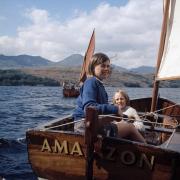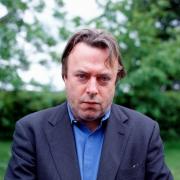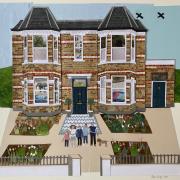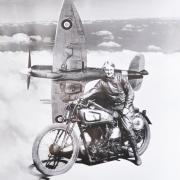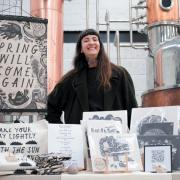From laundries and bus depots to garages and hotels, Southampton’s secret network of manufacturing facilities helped the RAF win the Battle of Britain | Words: Mark Gidney - Photos: BAE Systems

Classically British and distinct in design, the Spitfire symbolises peace through conflict.
Even today, 80 years on since the Battle of Britain, eyes still search the skies when the characteristic growl of a Rolls-Royce Merlin engine is heard among the clouds.
The Spitfire is well known; not so well known are the shadow factories, the secret facilities that ensured Spitfire manufacture could continue despite the threat of German bombing missions.
The Spitfire was a revolutionary concept that came out of the Supermarine Aviation Works in Woolston, Southampton, after the Air Ministry requested designs for a mono-wing interceptor in response to the growing threat of war.

By 1936, chief designer, Reginald J Mitchell had designed, created and built the first Spitfire prototype, making its first flight at Eastleigh Aerodrome on March 5, 1936. The Air Ministry was so impressed that it ordered 310 planes costing an estimated £2m.
This was an exceptional contract for Supermarine, an order so big that they had to expand their Woolston factory and build a second factory at Itchen.
Despite initial difficulties in manufacture due to Mitchell’s design being radically different from previous fighter planes, the first Spitfire eventually left the factory in August 1938.

Subsequent manufacture at the Woolston and Itchen factories continued in earnest as Britain entered war with Germany in the autumn of 1939, and Germany’s Air Force, the Luftwaffe, set its sights on defeating Britain from the skies.
By the summer of 1940, what Churchill coined as the Battle of Britain had begun. As Spitfires and Hurricanes duelled with Messerschmitts over the south coast, an army of skilled and unskilled workers gallantly worked in the Supermarine factories assembling fighter planes to enable RAF Command to confront Britain’s foe.
The bombings began. Relentless and persistent, RAF bases were bombed and fighter planes destroyed almost as quickly as they could be manufactured. London and strategic targets were next.
Southampton was a clear target for the Luftwaffe and the stylish Woolston factory was obvious from the air, even at night. Easily identified with its large Art Deco frontage – and in close proximity to the Itchen plant, Thornycroft shipbuilders, the gasworks, electric power station and railway – by September 1940 this area was systematically bombed by the Luftwaffe.
On September 15, 12 tonnes of bombs were dropped over the Supermarine Works and surrounding areas – little damage was inflicted upon Supermarine’s factories but surrounding houses were destroyed and civilians lost their lives.

It was this enemy action that would lead them to radically reinvent their manufacturing processes, to ensure that Spitfire production would continue even if the factories were destroyed. Their new strategy was to break up the Spitfire manufacturing process by dispersal of individual component manufacture to shadow factories across the south coast and beyond.
These facilities were less recognisable sites where parts could be manufactured or stored before final assembly at Supermarine’s hangars. They were sheds, garages, hotels, laundries, warehouses and bus stations, and would ultimately equate to over 60 sites with a total floor space of 1.4 million sq ft.
Before the shadow factory strategy could be fully instigated the Luftwaffe continued its onslaught. Intense localised bombing raids on September 24 and 26 were a decisive blow that would not only see many lives lost but would mark the end of the Woolston and Itchen plants.
The fervency of the bombing during this period and the intense strain it clearly had on the Spitfire workforce cannot be underestimated.
Sheet metal worker, Phil Pearce recalled a typical incident: “I remember hearing the sirens and almost instantaneously the ground shaking and I heard loud explosions.
“I saw a very large press which I felt would give me more protection, so I quickly crawled under it as there was no way we could risk leaving the building with the bombing already underway.”

To Britain’s good fortune Supermarine’s design office was unscathed in the bombing and the invaluable technical drawings and blueprints were saved, as were important jigs and tools that would allow continued production.
The Ministry of Aircraft Production amplified Supermarine’s shadow factory plan. The shadow factories had to be everyday places not easily identified by the air. Dispersal ensured that if one site was destroyed in a raid, the effect on production would be limited.
From the Polygon Hotel near the Southampton docks, Supermarine’s management searched for industrial units that had capacity for manufacture but were not easily identifiable.
Initial sites were fairly local such as Hendy’s premises at Chandlers Ford who were assigned to manufactured fuselages and the Hampshire & Dorset Bus Station in Shirley producing wings.

But it wasn’t long before Supermarine expanded to take in a 50-mile radius of the city and sites were identified that had the potential for self-contained Spitfire production.
Good planning and coordination was essential for success and an efficient framework was rolled out in four areas, where hubs were fed by smaller facilities and linked closely to airfields.
The Spitfire shadow factories were born through adversity and their gallant and often unskilled workers, were the unsung heroes of World War II.
Their combined and highly organised efforts would build a staggering 12,000 fighter planes throughout the war that were instrumental in victory during the Battle of Britain. Victory that would turn the tide and pave the way for complete victory in Europe.
Spirit of the Spitfire
After a chance discovery by a fishing boat, a Spitfire was retrieved from the depths of Poole Bay after spending nearly half-a-century in the muddy seabed.
It was very clear from the blade length and pattern, and the shape of the spinner, that this precious find was an early Mk1 Battle of Britain Spitfire.
Extensive research through official RAF records and numerous accounts of dogfights and planes lost in and around Poole Bay during the Battle of Britain, left no doubt that this was Spitfire P9427, flown by Sergeant Pilot Zygmunt ‘Ziggy’ Klein of 152 Squadron, lost in combat on the November 28, 1940.
Identifying, then researching the history of this Spitfire and the courage of its Polish pilot, was undertaken by Emsworth-based watch company Zero West co-founders, Graham Collins and Andrew Brabyn.
Zero West Watches, a company whose aim is to preserve history by identifying ‘time and place’, smelted down the Rolls-Royce Merlin engine metal from this discovered plane, to create an engraved disc insert for their newS4-P9427 watch.
Spitfire P9427 was manufactured by Supermarine Aviation Works in Southampton. Its first flight was March 19, 1940 from Eastleigh Aerodrome. Discover its full story at zerowest.watch




